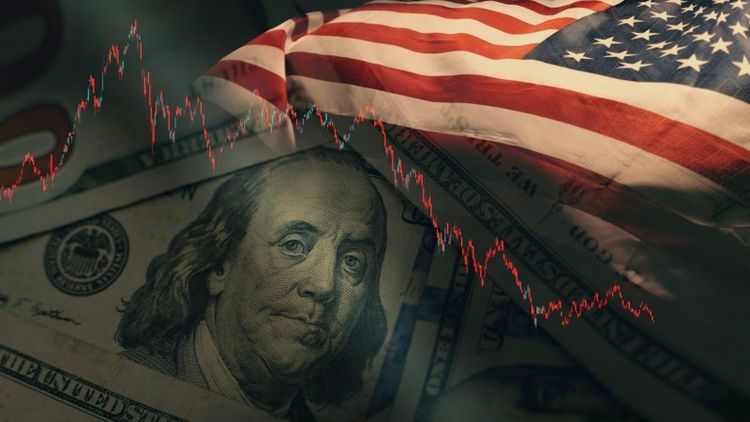FX Daily: Jumping on the inflation swing

As of June 13th, 2023, the blog has been updated within the last 7 hours.
The release of CPI data in the US is possibly the most significant risk event this week. This is due to the potential impact on the FOMC announcement, which is currently uncertain. Also, the USD rates may be more important than anything related to the ECB. If the core consensus read is 0.4% MoM, we believe that the Fed will keep the status quo. Although this may not immediately affect the dollar.

The latest version of FX Talking, titled "Burden of proof", is now available for all readers. It contains our most recent predictions and opinions regarding the various currencies of both the G10 and emerging markets.
As the week began, the currency and rates markets were extra sensitive to any new information that could affect the economy and employment. Everyone was waiting for clues about what the Fed might announce regarding policy changes tomorrow. The most important factor the Fed considers is inflation. The CPI data from May, which was released today, could be the deciding factor for whether or not there will be a 25 basis point hike (which is currently only a 23% probability).
According to economic experts, the expected change in core CPI, which is an important factor for market movements, is 0.4% for this month, but some analysts provide a range of 0.3% to 0.5%. Our economic team also predicts a 0.4% change, leading to a 5.2% core year-on-year rate. This prediction can result in the majority of FOMC members favoring a hawkish hold instead of a 25bp hike tomorrow. If the change is 0.3% or lower, it will reduce the remaining 23% chance of a hike tomorrow. Therefore, the dollar does not need to decrease by much based on the expected change today.
When there is a 0.5% Month-over-Month (MoM) core inflation reading, the range of responses from the market varies greatly. Our analysis shows that the likelihood of an interest rate hike happening the next day would increase, and as such, the market's implied probability could surpass 50%. This would result in the dollar's value rising in all areas. The most notable impact would likely be seen in G10 FX, where USD/JPY (known for being highly responsive to Fed pricing) could experience another increase, potentially exceeding its recent high of 140.90 at the end of May.

The anticipated change for the headline measure is a 0.1% month-over-month shift, which means that the year-over-year growth will decrease from 4.9% to 4.1%. However, it will be the core rate that will largely influence the market's response.
Before the policy announcement on Thursday in Frankfurt, we released the ECB Cheat Sheet. It seems that the markets have already anticipated a 0.25% result, which is based on the recent ECB communication. Therefore, the main focus will be on their willingness to tighten things up in the future. Although it can be argued that there are fewer reasons to continue being hawkish due to the cooling down of inflation and growth in the eurozone, which decreases the likelihood of a hawkish surprise.
Looking at currency exchange rates, we don't think the upcoming ECB situation is as significant as what's happening in the USA. The recent drop in the value of the Euro compared to the dollar was due to a decrease in the short-term difference between these two currencies. But, the main reason for this was the sudden increase in the unstable interest rates for the American dollar, while the Euro rates were stable. This week, it's the US inflation rates and Federal Reserve's decisions that will have the most impact on the Euro-US dollar exchange rate. In general, US-based data and the Federal Reserve's next steps are what will shape the future direction for the Euro and US dollar exchange rates.
If our prediction of a 0.4% core CPI in the US is correct, there is a chance that the EUR/USD may increase slightly. This would happen if investors believe that there is no longer a 23% chance of a hike tomorrow. However, we are not completely certain of this outcome and suggest proceeding with caution while anticipating central bank events, which may limit gains for the pair.

Information released from the UK today indicates that the job market is extremely competitive, as unemployment rates have unexpectedly decreased to 3.8% and the average weekly pay has risen from 5.8% to 6.5%.
In this piece, our economist who specializes in UK economic matters talks about the persistent issue of UK wage inflation, which is hindering the likelihood of any rate cuts from the Bank of England until at least 2024. However, we are not entirely convinced that this will result in multiple rate hikes by the BoE. While the market is currently anticipating a rise of 100bp, we think that only two 25bp hikes (potentially in June and August) are feasible.
We have been talking about how the British pound is at risk of losing value if the Bank of England decides to lower interest rates in the future. However, the latest data suggests that there may be more rate increases in the coming months, so it's difficult to ignore the positive trend for the pound right now. However, the pound may start to be influenced by the U.S. dollar once the Consumer Price Index (CPI) risk becomes a factor.
This morning, Romania's latest inflation figures for May were made public, and they indicate a decrease from 11.2% to 10.6% compared to the same time last year. This result is higher than what experts predicted, and Romania now reports the smallest inflation rate in the CEE region. Not much is scheduled for the remainder of the day, except for the publishing of April's current account data for the Czech Republic and Poland; this is anticipated to show that both countries recently shifted to a surplus.
In other words, the foreign exchange markets are likely to become more interesting on a global scale. The Euro to US dollar exchange rate is expected to rise and investor sentiment is becoming more positive, indicating a good environment for central and eastern European currencies. The Czech koruna may slightly decrease to around 23.75 EUR/CZK following yesterday's drop, but the main focus is on the Polish zloty. Right now, it is holding at historically high levels, but uncertainty looms as the European Court of Justice prepares to rule on the FX mortgage case on Thursday. Even with this looming uncertainty, we see no reason for the zloty to depreciate. Rather, we anticipate it will remain stable around EUR/PLN 4.45 due to current favorable global conditions.
Please note that the following information provided by ING is for general knowledge only. It does not take into consideration your personal financial status or investment goals. The information provided is not meant to be considered as investment recommendations, legal or tax advice, or an offer to buy or sell any financial products.









































